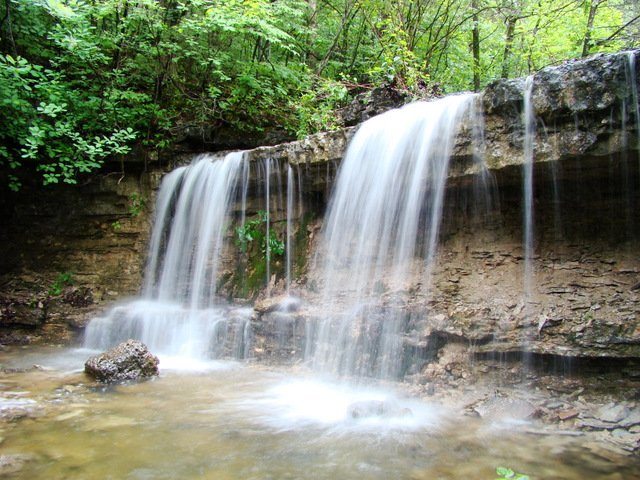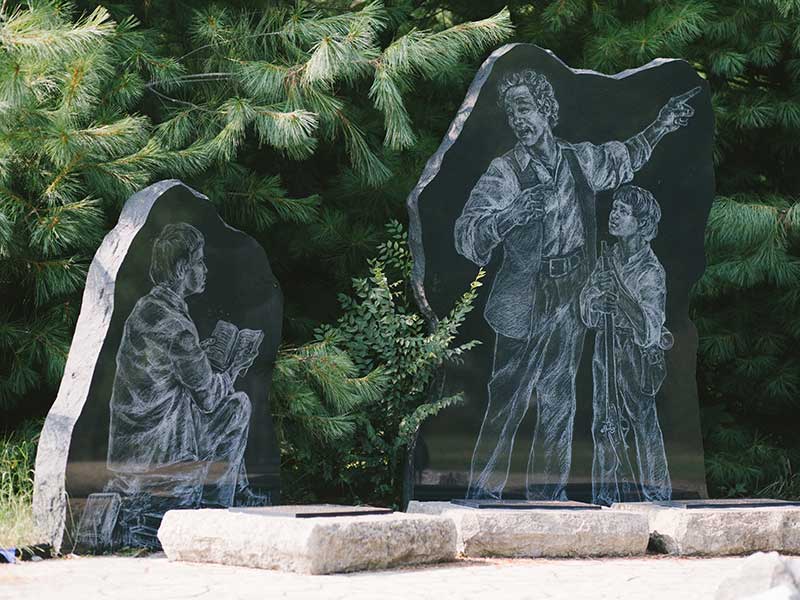Some of my earliest childhood memories were of visits to the Kansas City home of my paternal grandparents. Each and every visit ended with the same ritual—walking down the back hallway and asking to be lifted up to view a family artifact that was displayed prominently over the bedroom door. It was a Ute Indian bow that Kit Carson brought back from Colorado. We were never allowed to touch, only look.
The bow and a few arrows passed down through the generations, accompanied by a handwritten note that told their story and listed the hands into which they had passed over time. My grandfather Carson was a fifth cousin of Kit, my father a sixth, and I am a seventh. Since I was the eldest son, the bow would eventually end up in my possession. The prospect of that thrilled me.
Before my father died, he passed the bow to me along with the letter. At some point, I was struck with a new sense of obligation to preserve history, and I donated the bow to the Kit Carson museum in Taos, New Mexico. I made the trip west, the bow carefully protected in brown wrapping paper, and personally delivered into the waiting hands of the curator, who gladly received it on behalf of the museum. They had it authenticated at the University of New Mexico in Albuquerque. Yes, it was a Ute bow of the exact era described in the letter.
The little boy who looked up at the bow above the door could not possibly know that he would later become enamored with the history and lore of the Santa Fe Trail, the very same pathway that a young Kit Carson took west in the early 1800s. He could never have predicted that later in life, he would live just a few miles from the original Carson homestead in New Franklin, the place where the story began over two hundred years ago.
The story of the historic migration up and down the Santa Fe Trail, which began in and crossed Missouri, is infinitely more complex than the characterizations found in the nineteenth-century dime novels or movie portrayals of heroic characters. Separating fact from legend in characters who have been lionized is difficult. Larger-than-life portrayals of early characters like Kit Carson, Daniel Boone, or Jim Bridger were often created to satisfy people back east who craved vicarious adventure, but remarkable individuals actually did make unique and unparalleled contributions that shaped history. And the stories of these popular heroes are often representative of the same journeys taken by thousands of others.
Wait, There’s Somebody Already Here
Of course there were native people here long before the time of the Santa Fe Trail, but two tribes among the seven or more resident tribes of Missouri preceding the European and American eras are most directly relevant to the history of the Santa Fe Trail in Missouri: the Missouria and the Osage.
The Missouria lived and prospered here for approximately four centuries, from 1300 to 1700 CE. Sadly, as in the case of so many other tribes, they were decimated by European diseases such as smallpox, as well as intertribal feuding. A devastating ambush by the Sac and Fox on the Missouria sometime after 1790 was a crushing blow. In the eighteenth century alone, their tribal numbers decreased from an estimated 10,000 to only 1,000.
Another tribe, the Osage reigned over a huge territory between the Missouri and Arkansas Rivers. The Osage were warlike, aggressive, and expert in the use of weapons, and other tribal groups feared them.
During the French and Spanish periods of the eighteenth century, the Osage were sometimes tolerated and often pacified through a robust fur trade, alliances, and promises. As pressure on the Osage from competing tribes and encroaching settlers magnified, so did conflict and their defense of their homeland, perceived by settlers as raiding, stealing, and murder. They remained a dominant and free force throughout the southern part of Missouri reaching into Arkansas until American settlers began moving in. Then, a series of treaties required them to cede their land and move to ever smaller areas outside of present-day Missouri. [See the three-part series on The Tribes of Missouri by visiting MissouriLife.com>Shop>Print Archives.]
As a result of the decimation of the Missouria and the relocation of the Osage, nineteenth-century American travelers in Missouri did not experience resistance from the Native American tribes during the time when the commerce of the Santa Fe Trail was most active. That was not the case, however, west of Missouri. The great tribes of the Great Plains would respond to the growing incursion of immigrants with all of their strength and cunning. They were fearsome and great warriors, which gave rise to military detachments that accompanied caravans.
The Spanish Dominated
European powers began a vast exploration of the lands of other continents beginning in the fifteenth century, and the seafaring countries of Spain, Portugal, Holland, France, and England invaded, conquered, and colonized the lands and peoples of the Americas. The Spanish dominated South America, Central America, and Mexico and reached all the way into today’s American Southwest and California, creating a New Spain. The French controlled much of Canada, the Great Lakes, and the Mississippi River basin for New France. The English focused on the American eastern seaboard upward to and including Nova Scotia, as well as the western portions of Canada, and the northwest American coast.
The story of the Missouri territory and the great trails to the west was shaped by the interplay of the Spanish, French, English, and Americans. And this geopolitical stage was highly defined by the river systems that provided the pathways of travel for all of them. Spanish control and domination of the American Southwest played a critical part in the story of the Santa Fe Trail and all attempts at commerce with Spanish-held territories.
The very first person to travel the general pathway of the Santa Fe Trail across the plains was a Frenchman, Pierre Vial, who left Santa Fe in May 1782 and arrived in St. Louis in early October.

The First Anglo Woman to Cross the Trail
The first Anglo woman thought to cross the Santa Fe Trail was twenty-six-year-old Mary Dodson Donoho, the daughter of a Tennessee physician who came to Missouri. Mary’s parents, James and Lucy Davis Dodson, were some of the earliest pioneers in Missouri, rooted in Camden County, in particular the areas of Linn Creek, Chauncey and Glaize City. They no doubt lived in one of the ubiquitous pioneer log cabins of the time. Mary was born in 1807 and was one of ten children. She married her Kentucky-born husband, William Donoho, in 1831. Over time the couple would have six children.
In June of 1833, Mary departed Boone County with William and her nine-month-old daughter, Mary Ann. William was transporting a large quantity of merchandise to trade, part of a much larger caravan with 184 Missouri traders and thousands of dollars of trade goods. The Donohos would have traveled more than a hundred miles overland from Columbia to join the spring caravan in Independence. But because of the weather and muddy conditions, the rendezvous was shifted to Council Grove, over one hundred miles farther west. The well-known trader Charles Bent was elected captain of the wagon train. They were also accompanied by 144 soldiers of the US 6th Infantry, which was commanded by Captain William N. Wickliffe.
Why would William take his wife and small child on the risky journey? William had purchased land in Columbia in 1829, twelve town lots and fifty-four acres in the county, but in 1833, he had resold them as a way to finance their Santa Fe trip, likely in anticipation of a permanent move to Santa Fe.
Once the Donohos arrived in Santa Fe, they entered into the hotel business, opening the La Fonda on the Plaza. A hotel had sat on that same corner on the plaza ever since Santa Fe was first settled. During their years in Santa Fe, Mary gave birth to another girl and boy. As William continued to trade in New Mexico, making frequent trips to Taos, Mary ran the hotel, saw to the needs of her lodgers, and cared for her small children.
By 1837, tension increased as citizens rose up against the Mexican governor, and several men were killed. William decided it was not safe to raise his family in Santa Fe. In the fall of that year, the Donohos joined a caravan heading back to Missouri. Upon her return to Missouri, Mary inherited three enslaved people from her father’s estate.
As a remarkable part of their story, the Donohos took three women William had rescued from the Comanches back with them to Missouri. Sarah Ann Horn, Rachael Plummer, and a Mrs. Harris were taken captive in Texas following the murder, separation, and disappearance of their families. They were then taken to New Mexico and held captive for over eighteen months. William negotiated the purchase of the women from the Comanches, and they returned home to Missouri.
After a short stay in Independence, the women recovered in the home of William’s grandmother, Lucy Dodson of Pulaski County. They searched for their separated families and found some, but none of the women lived long due to poor health, broken by their ordeal. All three women died within a year of their return.
In less than two years, the Donohos left Missouri and moved to Clarksville in northeast Texas. Why Clarksville? Fellow Missourian William Becknell, “Father of the Santa Fe Trail,” completed his last journey on the trail in 1826 and by 1835, he had settled in Clarksville and built a large home there. Donoho no doubt knew the fellow trader and perhaps even enjoyed his hospitality. Becknell may have encouraged the Donohos to move to the new town and transfer the hotel experience they gained in Santa Fe to the establishment of a new hotel in Clarksville.
They built and operated the Donoho Hotel in Clarksville, a place that became renowned throughout the region. At the same time, Donoho acquired over ten thousand acres of land. William Donoho died in Clarksville in 1845. Mary, who was only thirty-seven years old at his death, continued to live in the community. She ran the hotel with her family, eventually turning over its operation to her son James late in her life. The hotel became something of a legend in Texas and during the Civil War and served as the stagecoach stand for Clarksville. Mary died in 1880. Five years later her son, James, returned to Missouri, but he traveled by train.
Mary is representative of those who went out on the trail, worked and lived in Santa Fe, perhaps returning to Missouri and then leaving again for other places.
The Santa Fe census of 1850 included only thirty American women. By 1860, the number was up to fifty and included ten nuns at the Loretto Academy. In 1870, there were more than sixty Anglo women, and by the time the railroad arrived in February of 1880 and the era of the Santa Fe Trail was over, more than two hundred American women were living in Santa Fe.
The Louisiana Purchase Changed Things
Spain sold the Louisiana Territory to the French in 1800. While the country wanted a zone to protect its southwest territory, the Louisiana Territory was a long way from Spain’s center of power in Mexico and the territory had never been managed well. Spain sold to the French hoping to keep a buffer between their kingdom and the growing and expanding Americans. When Napoleon surprised everyone and sold the entire territory to the United States in 1803, the purchase opened a huge territory for westward expansion, and Missouri was no longer just a destination for settlement. It was the very center of a transportation corridor that reached from the Mississippi River to the many great trails of the West, the Santa Fe Trail for commerce and the immigrant trails to Oregon, California, and Mormon country in present-day Utah.
At the same time, the new opening of the American West motivated individuals and companies to mount their own commercial ventures, in spite of trade between Spanish colonies and other countries being illegal. The well-known Missouri fur trapper and organizer of the Missouri Fur Company, Manuel Lisa, became interested in the Santa Fe trade in 1806 and invested with Jacques Clamorgan of St. Louis, who took four pack mules of goods and arrived in Santa Fe in 1807. In 1812, Robert McKnight, Samuel Chambers, and James Baird left St. Louis, arrived in Santa Fe later that year, and were promptly arrested by the Spanish who also seized their cargo. Such resistance, arrest, and imprisonment were always a looming possibility, until the political landscape shifted once again.
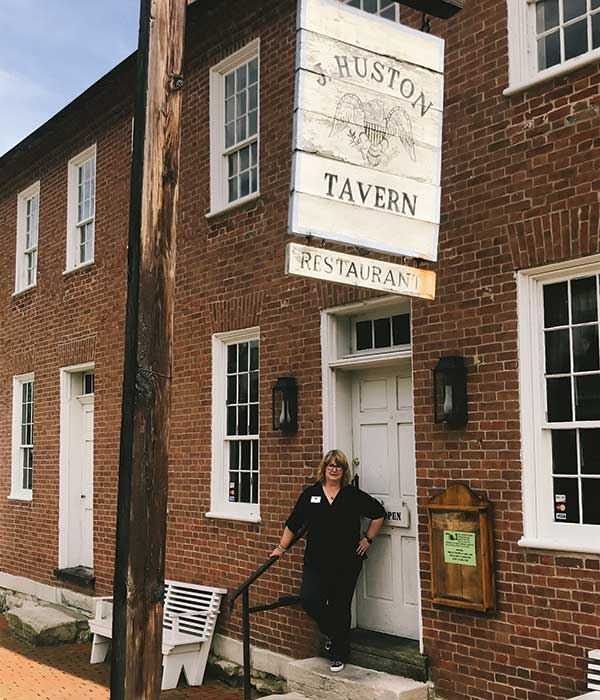
An Integrated Hotel in Independence
Emily Fisher was born a slave in Kentucky around 1808 and settled in Independence in 1836 when her White owner, Adam Fisher, purchased a farm just east of Independence. Emily eventually married another slave named Rowan who was also owned by Fisher. In the late 1850s when Emily was in her early forties, Adam Fisher gave her freedom. He also purchased a hotel in Independence, which Emily managed. After Fisher died in 1860, Emily became the owner and manager of the hotel, Jackson County’s first Black businesswoman.
Emily was exceedingly accomplished in regard to culinary, hospitality, and business skills. She created a thriving business for overland travelers, which was uniquely open to both White and Black travelers. At the time, most Black overland travelers had to find segregated accommodations, but Fisher’s hotel gained a reputation for outstanding service and clean rooms for persons of all races. African Americans could thereby enjoy safe and comfortable lodging before launching off on the trails.
Her donation of bricks made it possible to build the first African American church in Independence in 1886, which was the Second Baptist Church on 116 East White Oak Street. This remains the oldest Black church building in Independence. Emily Fisher was buried in the Woodlawn Cemetery of Independence in 1887.
Emily is representative of many enslaved people in the early days who came out the Missouri Road with their owners, settled, obtained their freedom, and remained as successful citizens and business owners.
Enslaved People Trod the Trails, too.
In addition to amassing more land for the empire, the Europeans wanted to use the wealth of the colonized lands and return it to Europe or establish new cash crop plantations that would raise needed products for the European market. Whether it was silver, cotton, or sugar, a large workforce would be required to make the enterprise cheap and efficient. Their solution for that work force was slavery.
In the sixteenth century, when the great European powers began what would become a 350-year-long slavery enterprise in the North Atlantic, it was in one sense nothing new. Slavery was part of antiquity and the Greco-Roman world. Arab slave traders were ubiquitous in the Mediterranean region during the Middle Ages. But the form and scale in the New World was new. Never before had such a worldwide, transcontinental coalition arisen dedicated to joining commerce and slavery, a coalition that included the monarchs and merchants of Europe, the cooperating kings and chieftains of Africa, and the vast slave markets of the Americas.
In the Americas, colonists received slaves from all parts of Africa, and they became the key to the prosperity of every labor-intensive enterprise: silver and gold mines, sugar and coffee plantations, cotton, hemp, and tobacco fields. By the eve of the Declaration of Independence, 1776, the British were sailing ships of slaves at the pace of 200,000 every decade, most of them sold in Virginia and the Carolinas. African Americans were a part of the human march across the American continent in the nineteenth century. Most did not have a choice in their participation in the great overland migration, but some did, at least in part. Free Blacks moved west to try to find some peace beyond the gravity of slavery and slaveholder culture. Black Americans joined many others at the jumping off places to provision the wagon trains heading west. On the western trails, African Americans joined a highly diverse cavalcade of humanity including White Europeans, Mexicans, Native Americans, and French traders.
The stories of the early mountain men include not only White people such as Kit Carson and Jim Bridger, but also African Americans like James Beckwourth, a fur trader who lived for years with a tribe of Crow.
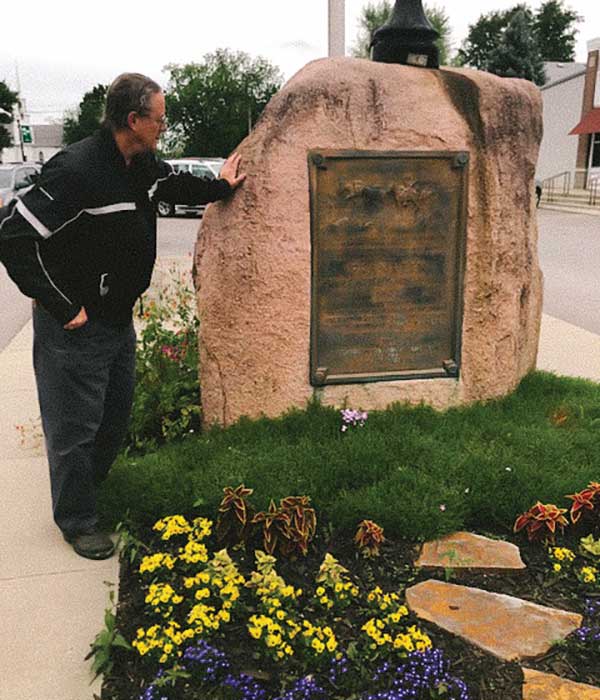
A Wealthy African American Supplier
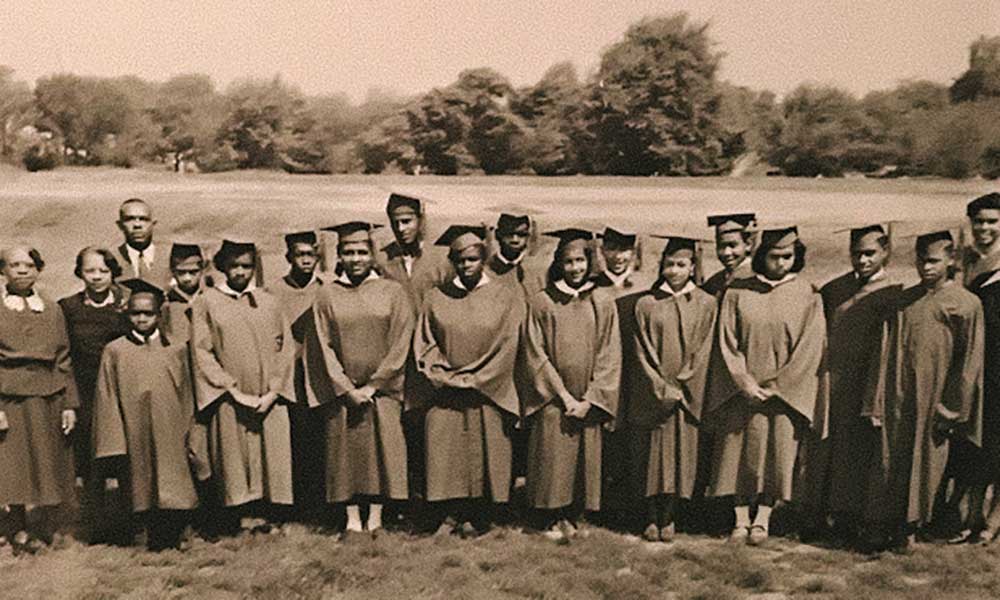
As profitable as investment in trade goods was on the trail, what was equally profitable was equipping and provisioning those who passed on the trail. A fortune was to be made by those who provided the wagons, horses, mules, oxen, blacksmithing, weapons, food stuffs, dry goods, accommodations, and entertainment. Entire towns grew and thrived as they did exactly that.
One of those who supplied the travelers was Hiram Young, whose life has been documented with a treasure trove of documents, news clippings, and census records at the Jackson County Historical Society archives, located in the Jackson County Courthouse.
Young was born into slavery in 1812 in Hawkins County, Tennessee. He was then named Hiram Walton after the man who owned him. Nothing is known about Hiram’s actual parents. At an early age, Hiram was trained in woodworking and the art of making ox yokes. The Walton family moved to Missouri in 1838. By the early 1840s, Hiram was sold to George B. Young, and his last name changed to Young. By 1843, he had worked and saved enough money to purchase his own freedom for $1,500 and that of his wife, Matilda, for $800.
Between 1847 and 1850, Hiram and Matilda lived in Liberty, but in 1850 they moved with their infant daughter, Amanda, to Independence. There he established a thriving yoke and wagon business, manufacturing wagons under government contract for new settlers heading west. He aided the western movement and prospered as a result. He became one of the wealthiest businessmen in Jackson County.
By 1860, Hiram held a virtual monopoly on yoke and wagon manufacturing and was producing over 50,000 yokes and 900 wagons a year at the height of his business. His wagons could haul 6,000 pounds pulled by six teams of oxen. Each wagon was marked with his logo, Hiram Young and Company. The Hiram Young yokes and wagon had gained a robust reputation up and down the Santa Fe Trail. His factory and farm was six miles east of Independence, located on the east side of what is now Highway 24 and Liberty Street. He provided emigrants with a wide variety of equipment and foodstuffs, as well.
As a part of his business, Young leased and purchased slaves from the nearby farm of Jabez Smith (current site of the Chrisman High School), providing them with a pathway to freedom. He paid them the same wages as free men working in his shop, thereby enabling many of them to save their money and buy their freedom.
“Slavery was very different in Missouri as compared to the Deep South—not nicer, but different,” says Leah Palmer, director of education at the National Frontier Museum in Independence. “There were many small slaveholding families whose slaves often came with a particular skill set that was hired out to others. All this provided more opportunity for slaves to make additional income and purchase their freedom and the freedom of others—something not customary in the Deep South. In addition, there was more fluidity of movement in the Black experience. Some were runaways and headed over the border to free states, some attached to entrepreneurs in the wagon trains, and others like Hiram Young worked within the system.”
During the Civil War, Young fled with his family to Leavenworth, Kansas, but returned to Independence following the war. After rebuilding his plundered business, Young constructed the first school to educate African American children in the area, the Hiram Young School. He also had a central role in the formation of St. Paul’s African Methodist Episcopal Church.
Hiram sent his daughter to college within one generation of slavery. His business helped people fulfill their dreams to travel to Santa Fe even as he became prosperous doing so. Hiram Young died in 1882 and was buried in Woodlawn Cemetery in Independence. He shares the same plot and stone with his wife, Matilda, and daughter, Amanda. The epitaph on Hiram Young’s gravestone reads simply: Hiram Young, after living a useful life.
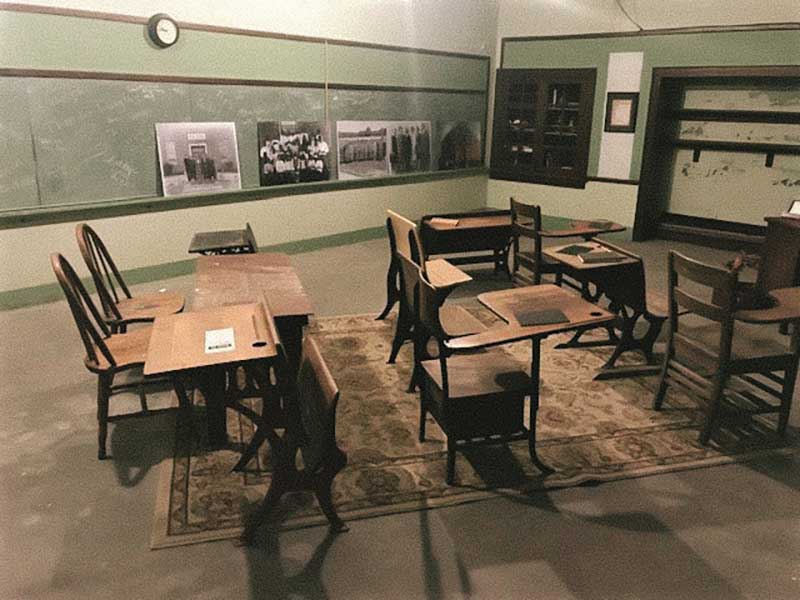
Franklin was the Trailhead
People who reside at a distance, and especially at the North, have generally considered St. Louis as the emporium of the Santa Fe trade, but that city, in truth, has never been a place of rendezvous, nor even of outfit … The town of Franklin on the Missouri River, over 150 miles further to the westward, seems truly to have been the cradle of our trade. —Josiah Gregg, 1844
After the Lousiana Purchase, the well-known and well-traveled Boone’s Lick road became the first significant trans-Mississippi overland route westward. Three separate routes, evolving from the early 1800s until 1830, carried settlers and travelers heading farther west, and at least two of these routes led to Franklin, which for a moment in time was the jumping off place to the Santa Fe Trail.
Franklin was platted in 1816 on the north bank of the Missouri River and named in honor of Benjamin Franklin. In 1817, William Becknell purchased land in Franklin and a farm in Howard County. Becknell had migrated to Missouri from Virginia and first settled west of St. Charles, in 1810. But by 1811 he was operating a river ferry at Arrow Rock. In the War of 1812, he served as a ranger in Daniel Morgan Boone’s company. An enterprising man, he was connected to the well-heeled James and Jesse Morrison of Philadelphia and also partners of Nathan and Daniel Morgan Boone. Becknell often aided the Morrisons in their projects and in turn benefited from their support. In early 1819, there was a financial panic in the United States, and it hit the Boonslick hard. Becknell was one of the land-rich, cash-poor farmers who owed the bank. He was arrested and set free on bond, pending the payment of his rather large debt. When it looked like opportunities were opening with Mexico, he took action with a venture that was one chance he had to outrun debtor’s jail.
Several men of Howard County met to plan a venture, and Becknell was elected to lead the expedition. On September 21, 1821, a small party of four men and pack mules crossed the Missouri River at Arrow Rock. They traveled to Fort Osage, followed the Arkansas River through the plains into the Rockies and the Sangre de Cristo Mountains, and ran into Mexican officials near the Kearny Gap. It was a propitious encounter, the historical importance of which was most likely lost on all parties. Becknell discovered the good news that Mexico had secured its freedom from Spain, and the Mexicans escorted Becknell and his band to Santa Fe. They arrived on November 16, 1821.
Becknell returned with a handsome profit. The next year, 1822, Becknell returned to Santa Fe, this time with three wagons of trade merchandise. This time, he took the waterless reaches of the Cimarron Cutoff and shortened travel time by ten days. For taking that risky gamble and opening a new and passable wagon route, he was honored with the title Father of the Santa Fe Trail. The caravans increased in their size and investment year by year.
“When Becknell mounted his first trip in 1821, he left with $300 and returned with $6,000. By his third trip in 1824, he had 25 wagons, 81 men, and 200 horses and mules. An investment of $30,000 yielded a return of $180,000,” says Ray Glendening, president of the South Howard County Historical Society in New Franklin. All manner of goods from the east were transported to the southwest and traded for silver, buffalo rugs, and livestock. The intense era of Santa Fe trade had begun.
In 1825, Missouri’s Senator Thomas Hart Benton presented a Congressional bill to survey the trail and negotiate Indian treaties for safe passage. Though the treaty of safe passage was accomplished with the Osage, the same agreement was not accomplished with other Great Plains tribes. A party of government commissioners set out from Fort Osage to survey the Santa Fe Trail in 1825 and used a spot just south of the fort as the zero milestone. Though the surveying and marking of the trail certainly happened, it did not accomplish what Benton and others hoped—the future trail meandered and diversified in ways that soon made the initial survey pathway obsolete.
At the same time the Americans were surveying the trail, Mexicans were pursuing their own goal of opening the trail for commerce moving west to east. The governor of New Mexico sent his envoy, Manuel Simon Escudero, up the trail in 1825 to Franklin, St. Louis, and finally, Washington, DC. The Mexicans desired the same protections from the Plains Indians, and they were just as earnest about west-to-east trade as the Americans were about east-to-west. This exchange was mutually advantageous, and the broad network of international trade continued unabated until 1846.
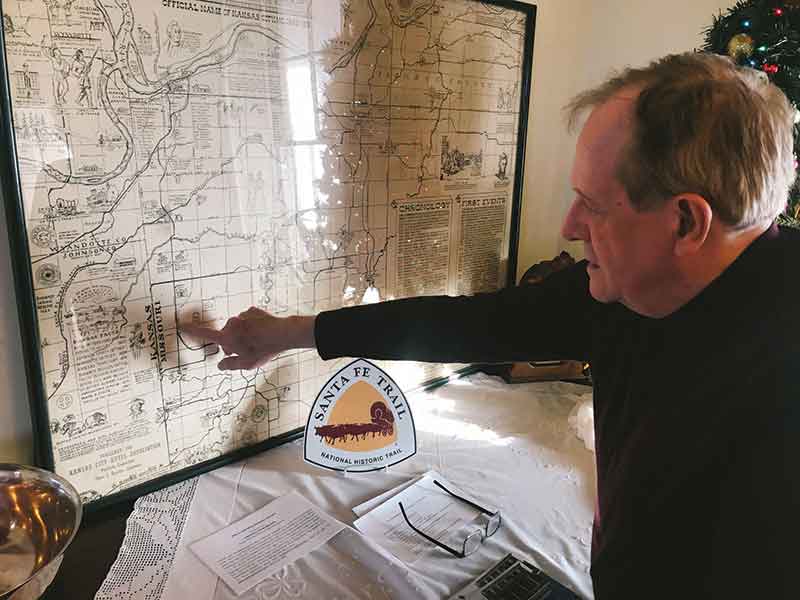
Kit Carson Runs Away
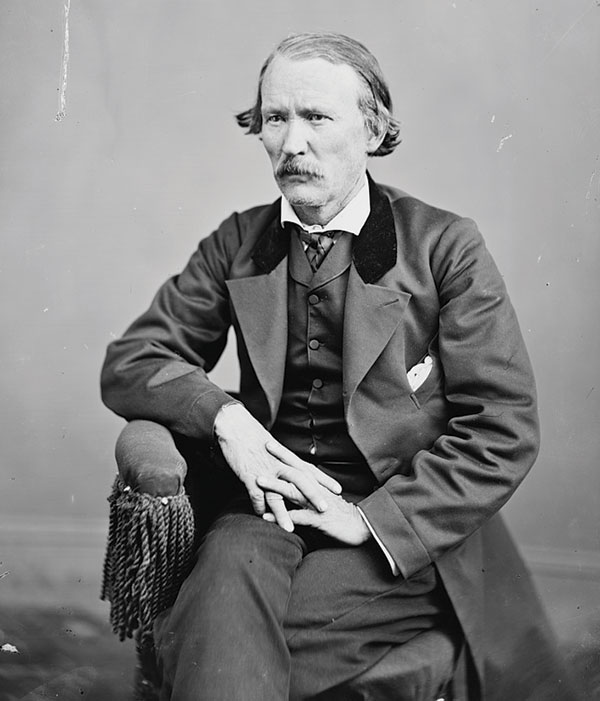
In the autumn of 1826, fifteen-year-old Kit Carson ran away from his saddler’s apprenticeship in Franklin and joined a wagon train heading to Santa Fe. His journeys took him back and forth along the trail, as well as living and working as a mountain man and trapper in the fur trade in Colorado, California, and Wyoming. It was a way of life common to hundreds of other mountain men.
After over fifteen years living and working in the mountains and then as a hunter at Bent’s Fort in Colorado, he headed back to Missouri in 1842 to arrange an education for his daughter, Adeline, placing her among relatives near Fayette. Continuing on to St. Louis and then returning west by riverboat, he made the chance acquaintance of John Fremont, who was in search of a reliable guide for his mapping of the West. Carson fit the bill and spent the next four years in Fremont’s company doing just that.
Carson filled many other roles during his time out west, including serving as an Army officer and Indian agent. Though his home and family were in Taos, he was rarely there, often responding to yet another invitation that would take him on some trail again, toward important service on some other western horizon.
During the decade beginning in 1826, when Carson first traveled the trail, more than 1,500 people, 775 wagons, and over $1,365,000 worth of merchandise moved over the trail.
For a few glory years, Franklin served as both the terminus of the Boone’s Lick Road and the trailhead of the Santa Fe Trail. For that reason, Franklin soon grew to be the largest town west of St. Louis. And though moving the town of Franklin uphill to a new location in New Franklin might have protected the town from an unpredictable river, it could not be protected from the vagaries of a moving trailhead or new transportation modes. Less than ten years after Becknell’s maiden voyage, the primary locale for disembarkation and outfitting had already moved westward. By the 1830s, although overland travel continued, river travel had become more dependable, safe, and affordable, and settlers and merchants alike traveled all the way up the Missouri River to new jumping off places at Independence or Westport.
A good example is the Missouri merchant brothers Edward and William Glasgow in Lexington who provided detailed descriptions of their 1846–48 commerce to Santa Fe and Chihuahua. They described steamboats departing the landing at St. Louis and arriving in Independence with scarcely any mention of what existed in between. By that time and for all practical purposes, the Missouri road had become a watery one.
There was no way that the young boy of so many years ago could possibly have known the larger back story of the Ute Indian bow brought back to Missouri by Kit Carson, passed down through the generations, and displayed in my grandparents’ Kansas City home. I couldn’t possibly have known the complexity behind the simplistic stories of the West often told. I had not yet discovered the individuals, families, companies, and armies that struck out on the trails that would define a new nation. The Santa Fe Trail was one of those that helped change everything.
Missouri sat right in the middle of the primary transportation corridor of a new nation. We are in large part the result of what precedes us, even if we don’t know it.
“Grampa, will you hold me up so I can see the Kit Carson bow?”
“Yes, but don’t touch, just look.”
“Okay, I won’t.”
And he didn’t touch. But boy did he look.
For further reading and the sources consulted for this story, visit MissouriLife.com/SantaFeTrailSources
Second Generation Travels in Style
In June of 1846, the eighteen-year-old Susan Shelby Magoffin and her experienced trader husband Samuel Magoffin set out from Independence on one of the most memorable and documented frontier journeys of an American woman. Susan had come from the prominent Shelby family in Kentucky. At the time of their trip, the Magoffins had only been married eight months. Susan kept a detailed account of her journey in her journal, a journal that included personal reflections of love and life on the trail, observations about flora and fauna, the identification of trail landmarks, a record of the people she met, miles traveled, and Mexican life and customs. Her model for writing may have been based on Josiah Gregg’s Commerce of the Prairies, which she appeared to know by heart.
She traveled with her husband’s large merchant caravan at the height of Santa Fe trade. Her husband’s older brother James was a government agent entrusted with securing a peaceable annexation of Mexican lands, which would nearly double the size of the United States. For that reason, the caravan was accompanied by a large military detachment.
In contrast to the austere conditions endured by the simple travel of Mary Donoho (see page 38–39), Susan traveled in relative style; she had a personal coach and tented accommodations at night. In addition, she was accompanied by an unnamed slave who she simply referred to as “my attendant.” Her style of travel was not only a reflection of later travel down the trail, but also a reflection of her station in life and the culture of which she was a part.
Susan Magoffin ended her journal with the arrival in Santa Fe on September 8, 1847. The Magoffins later left Santa Fe and traveled down into Mexico, passing through the towns of El Paso, Chihuahua, and Saltillo. Shortly after that, she struggled with yellow fever during a pregnancy. She lost that infant son. Taking a vessel from the Mexican coast to New Orleans, she returned to Lexington, Kentucky. In 1852, Susan and Samuel moved to Barrett’s Station near Kirkwood, where Samuel had received a large estate. Susan’s third child, Jane, was born in 1851, and Susan died in 1855 shortly after her next daughter, her namesake Susan, was born. Susan was buried in Bellefontaine Cemetery in St. Louis.
Susan Magoffin is representative of second-generation Santa Fe Trail travel, a full twenty-five years after Becknell made his first trip to Santa Fe in 1821. Traveling during the prime of the trail’s commerce, there is no mention of crossing Missouri overland, only arriving in the jumping off place of Independence. In her journal entries, we find mention of steamboat travel, and we assume they traversed Missouri by steamboat. For the Magoffins, Missouri was something to be crossed, an intercontinental highway to somewhere beyond, a waterway to the West.
Follow the Trail Today
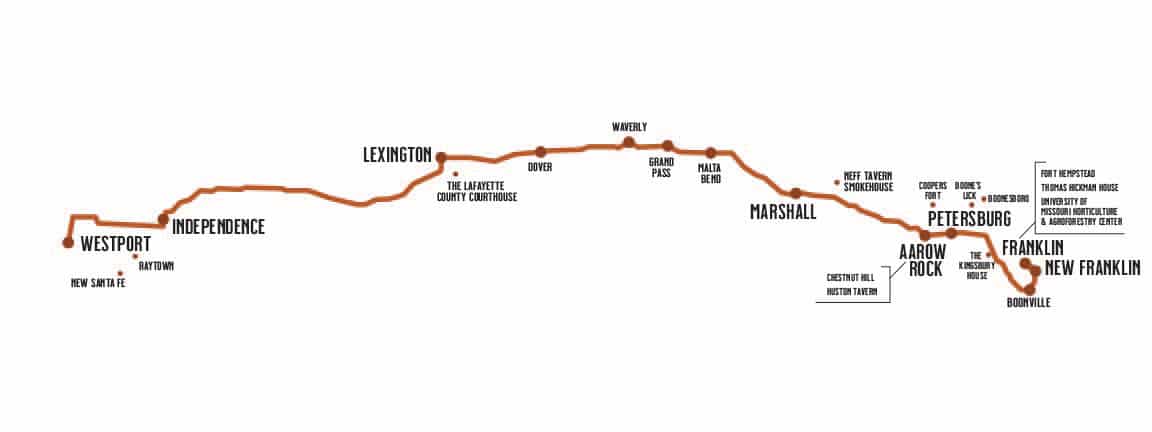 Present-day travelers may enjoy following the path of Becknell’s overland journey from New Franklin to Fort Osage, which marked the essential pattern for the Santa Fe Trail in Missouri before Independence and Westport became the primary trailheads for westward travel. (Visit MissouriLife.com/AuthorJourney for more detail from Tim Carson’s point-by-point stops along the trail.) Here are a few highlights:
Present-day travelers may enjoy following the path of Becknell’s overland journey from New Franklin to Fort Osage, which marked the essential pattern for the Santa Fe Trail in Missouri before Independence and Westport became the primary trailheads for westward travel. (Visit MissouriLife.com/AuthorJourney for more detail from Tim Carson’s point-by-point stops along the trail.) Here are a few highlights:
The historic Thomas Hickman House is a fully restored one-and-one-half story Georgian cottage. It was constructed for the Howard County merchant Thomas Hickman in 1819 and is one of the oldest houses in Howard County. Entirely remodeled, the house now features period furniture and a summer kitchen modeled after other detached kitchens of the era and is usually open for touring during special events.
A marker honoring Old Franklin and the Santa Fe Trail can be found about a half mile west of the present day Boonville Bridge on Route 87.
Cedar Grove, or the Kingsbury House, was built in 1856 and would have been passed by wagons destined for Santa Fe on the River Road (Route Z).
Cooper’s Fort of 1812 site was marked at Petersburg by the DAR.
Arrow Rock was named for a distinctive rocky bluff landmark bearing the name. The origin of its early French name, “rock of arrows,” was related to the stone there used by American Indians to make points for their arrows. Archeological evidence shows that the site had been inhabited by indigenous people for the past 12,000 years.
The town of Arrow Rock was founded in 1829. It became a busy trade center at mid-point between St. Louis and Kansas City.
The Osage Trace was the first name of the segment of the Santa Fe Trail after it left Arrow Rock and headed west through present-day Marshall and Lexington, and on to Fort Osage, before 1821, when it became known as the Santa Fe Trail.
Chestnut Hill is the two-story white home that Santa Fe trader Phillip Thompson built in 1844, one mile west of Arrow Rock on Route 41. It is identified with a DAR marker.
The Neff Tavern was only four miles farther on Route 41. Just beyond a small bridge turn on a gravel road that angles in from the left and leads to the DAR marker that locates the site of a small log tavern built on the Santa Fe Trail in 1837. The Isaac Neff family cemetery is located a short distance up the road.
Wagon ruts or swales still exist on private property near Marshall. They are on the Weinreich Farm, northwest of Marshall on County Road 416. This physical evidence of the trail was added to the National Registry of Historic Places in 1994, and the family has kept the area of the ruts in pristine, undeveloped condition. From Marshall, the Santa Fe Trail follows the course of Highway 65 west to Waverly.
Malta Bend, Grand Pass, and Waverly each have DAR markers for the Santa Fe Trail. When you leave Waverly, follow present-day Highway 24 to Dover, which also has a marker.
Lexington was established in 1822 on the bluffs of the Missouri River. It was situated on the original overland Osage Trace. Lexington was the central headquarters for the mercantile firm of brothers John, James, and Robert Aull. They opened branch stores in Richmond, Liberty, and Independence, making them the largest business enterprise on the Missouri frontier. In the 1850s, the freighting company of Russell, Majors and Waddell equipped civilian and military freight over the Santa Fe Trail. The same firm operated the Pony Express over the central route to California. A memorial to the trio may be seen just west and behind the Lafayette Regional Hospital.
Independence became the primary trailhead of the Santa Fe Trail by 1834, replacing Franklin, Arrow Rock, and Fort Osage as starting points. Until 1856, trade goods were brought upriver from St. Louis and transferred from steamboats to freight wagons bound for Santa Fe.
Blue Ridge Boulevard in the Kansas City metropolitan area is situated directly on the Santa Fe Trail, which continues through Raytown, Cave Spring, and finally to New Santa Fe.
Westport, established in 1835, was another destination for some travelers leaving Independence. By 1843, it had become the primary eastern terminus of the Santa Fe Trail. By 1845, it possessed the lion’s share of Indian trade. Though Westport competed with Independence for the lucrative outfitting trade for its first two decades, this more westerly town became preeminent by 1853, when it achieved its height in both trade and population by 1858. Great campgrounds for gathering wagon trains and their livestock were located on the site of the McKinney farm, located between the present-day 67th and 71st Streets, and from Wornall to the state line. The primary traffic flow of the trail zig-zagged through Westport then turned toward New Santa Fe.
New Santa Fe is a little post village that was situated on the present-day western border of Kansas City. The trails from both Independence and Westport intersected here, and New Santa Fe was the jumping off point into the sea of prairies, Indian territory, and Santa Fe.
Photos // Tim Carson, Holly Kite, Hiram Young School, Tim Carson; Brady-Handy Photograph Collection, Library of Congress, Prints and Photographs Division
Related Posts
7 Missouri Waterfalls
A haven for gorgeous scenery, the Ozarks is brimming with stunning waterfalls. April and May are great months to enjoy our waterfalls, as water flow is at its peak from spring showers.
Santa Fe Trail Sources
Sources and Additional Reading Recommendations on the Sante Fe Trail.
Santa Fe Trail: Author Journey
In 1821, Missouri attained statehood, and Mexico won its independence from Spain. Once restrictive Spanish control came to an end, the Mexican markets opened wide to the Americans. Those two colossal events set the stage for a dramatic unfolding era.

